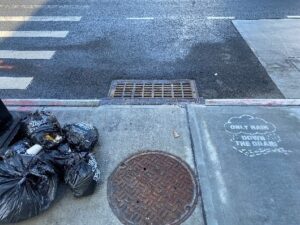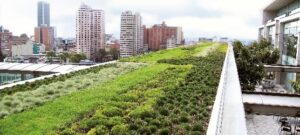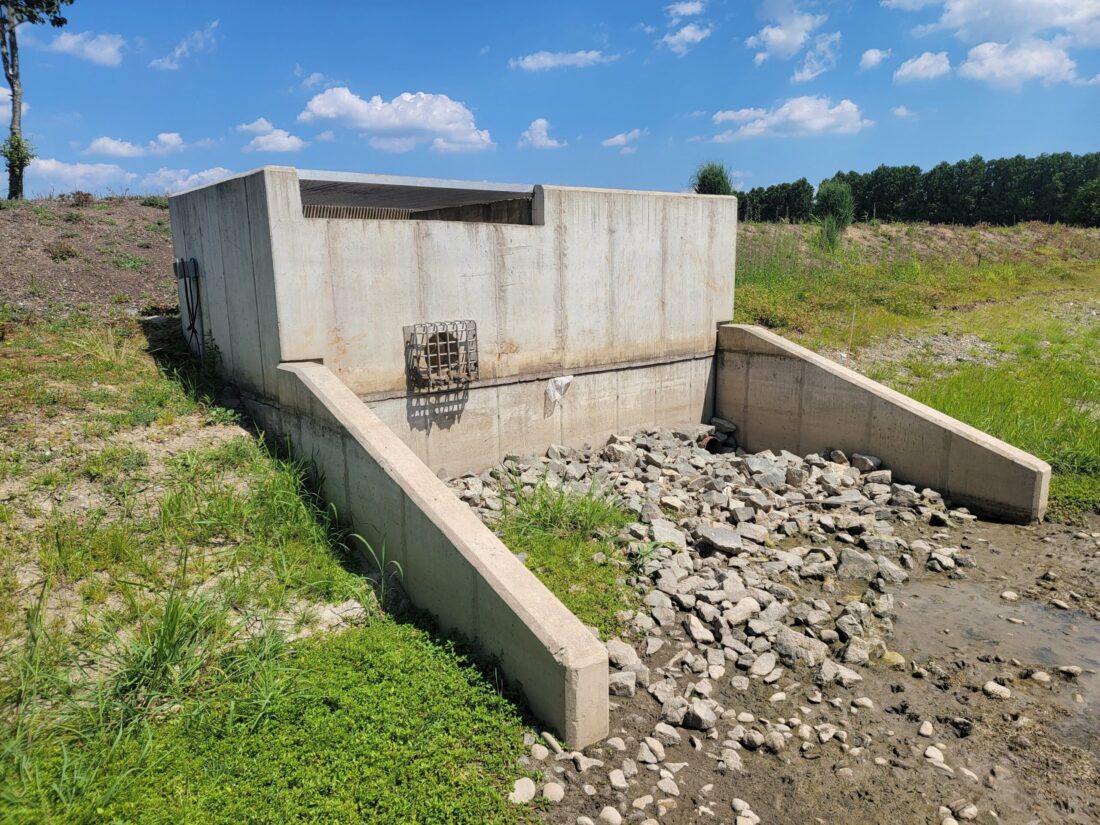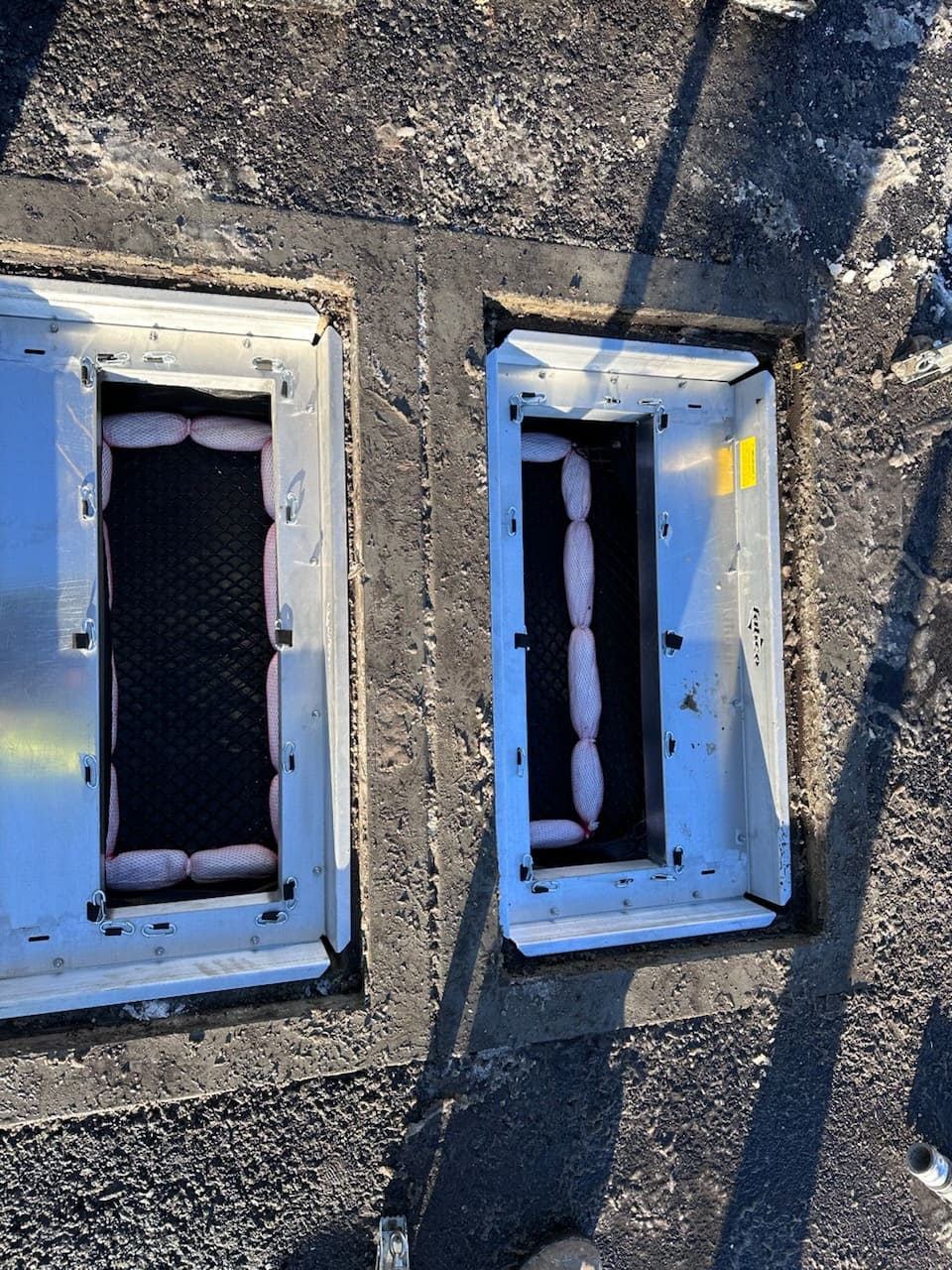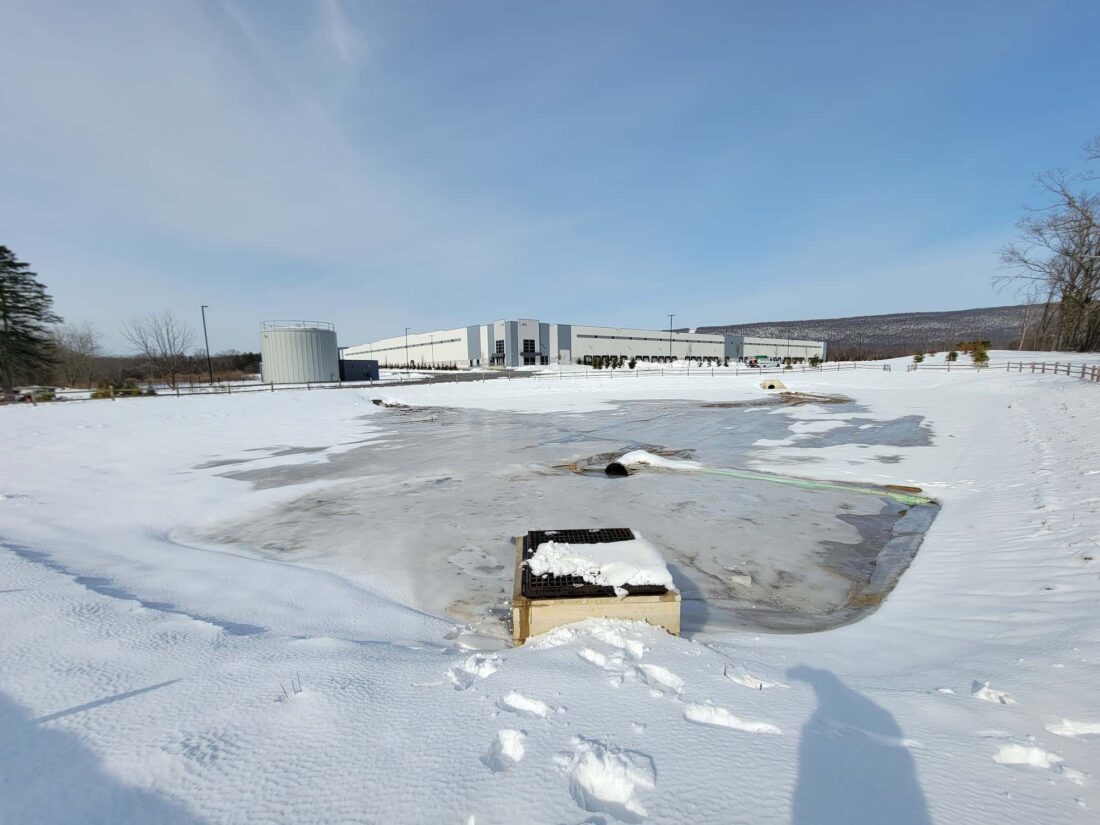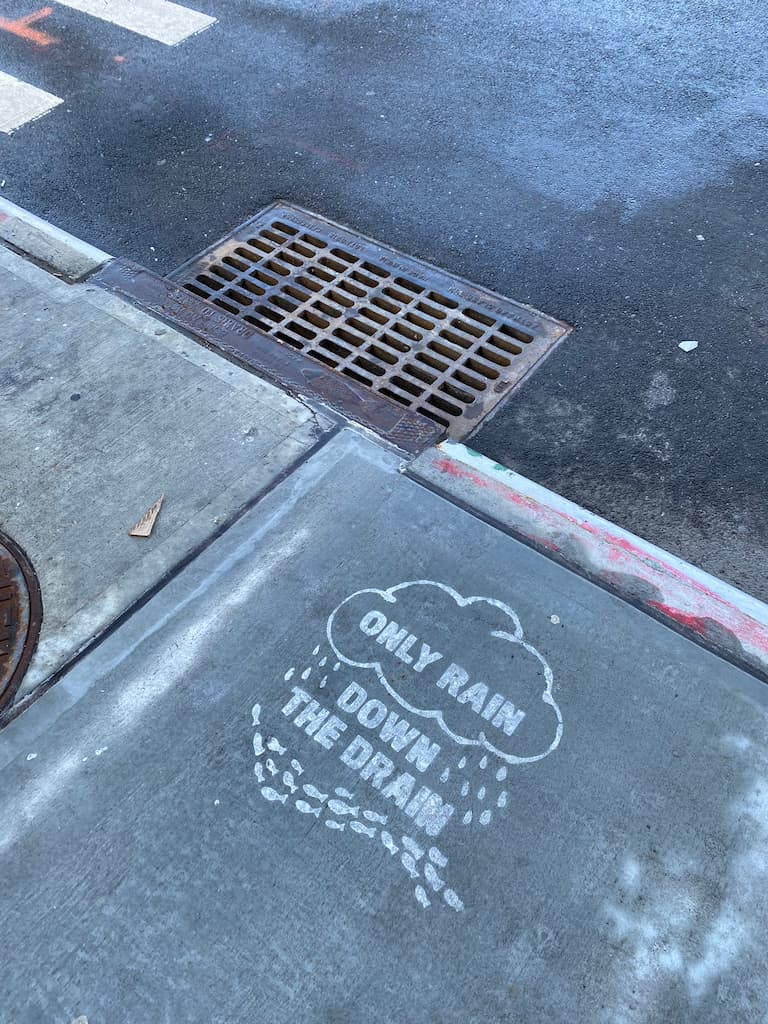
Urban Stormwater Management
Last Updated on February 23, 2024 by Stormwater Compliance Solutions
What is Urban Stormwater Runoff, where does it come from, and where does it go?
Stormwater Runoff is rain or snow melt that flows on the ground’s surface and does not percolate into the soil, also known as surface water runoff. Urban Stormwater Runoff is just that, but in populated areas that are not considered rural. Generally, this is any census designated place with over 2,500 inhabitants. For the purpose of this article, we are going to focus on runoff from dense, city-like areas with little to no pervious coverage.
Runoff primarily comes from impervious surfaces such as paved streets, parking lots, sidewalks, and impervious roof tops. Runoff from these surfaces can pick up, carry, and deposit harmful pollutants such as trash, chemicals, and sediment in to our waterways. Many municipalities operate a Municipal Separate Storm Sewer System (MS4) which is a system of inlets, pipes, and outfalls that convey stormwater runoff to surface waterbodies including lakes, rivers, bays, and oceans. However, large cities often operate a Combined Sewer Overflow system (CSO), which combines sewage and stormwater runoff into one pipe network for treatment prior to discharge to surface water. In long duration or high intensity rain events, the CSO system often becomes overloaded, discharging untreated raw sewage and stormwater to surface water bodies to prevent upstream flooding – this is considered point source pollution.
What can contaminate Urban Stormwater Runoff?
Urban stormwater runoff contains a variety of organic and man-made contaminants that have the potential to harm surface water bodies and the surrounding ecosystems. Together, these contaminants are called nonpoint source pollutants because they come from a variety of sources, untraceable to one exact location. Depending on the density and activity of the urban area, there may be different primary contaminants.
For example, in suburban areas with houses, lawns, sidewalks, and shaded streets, the most common pollutant will be organic debris. This debris includes fallen leaves, grass clippings, twigs, sediment, and road grime. Other nonpoint source pollutants include trash, plastics, herbicides and fertilizers, and bacteria from pet waste. But how do these nonpoint source pollutants end up in the local MS4? Most often, these pollutants are carried by wind and rain to the MS4, where they are then transported to local waterbodies. However, pollutants such as trash, twigs, and grass clippings are often placed along a curb for pick-up and disposal, where sheet flowing surface water runoff can carry them to nearby inlets, and thus surface waterbodies. Excessive amounts of organic matter decomposition in the water will contribute to the Chemical Oxygen Demand (COD), which is the amount of oxygen required to oxidize soluble and particulate organic matter in water. Increased levels of COD will reduce the amount of dissolved oxygen available to aquatic life which is what they rely on to “breathe.” Eventually, a dead zone can form where there is insufficient oxygen to support any aquatic life.
Heavily urbanized areas like large cities can also feature organic debris, but it is generally at a smaller scale. Cities often contribute to other surface water pollutant categories such as oil, grease, inorganic debris, and a group of chemicals called BTEX due to the increased population density and vehicular traffic. Oil and grease are generally introduced to runoff due to leaks from unmaintained vehicles (cars, delivery vans, and tractor trailers) and near refueling operations. Think about it – when you put gas in your car, there is almost always a few drops that sprinkle from the nozzle between your car and the pump. Those few milliliters compounded over the thousands of vehicles in a city will add up quickly and wash into the MS4 or CSO during a rain storm.
Secondly, inorganic debris and human generated waste, such as trash and plastic, is prevalent on most major city streets. Small trash baskets for passerby’s, dumpsters for businesses and restaurants, and even heaps of garbage on the sidewalk awaiting pickup by local sanitation workers all contribute to inorganic debris in stormwater runoff. Baskets and dumpsters are often left open, which will allow for wind and even rodents to carry away small pieces of garbage. Bulky trash bags left on the street also allow rodents to feast on our waste, leaving tears in the bags and allowing wind and rain to carry away pieces of trash.
Overflowing Trash Trash Near a Storm Drain
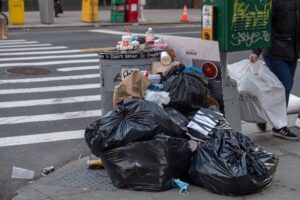
Finally, a much less obvious nonpoint source pollutant comes in the form of four chemicals commonly grouped together. They are Benzene, Toluene, Ethylbenzene, and Xylene, aka, BTEX. Small amounts of BTEX easily go undetected in CSO treatment plants and have larger consequences with smaller quantities in our water ecosystems. These four chemicals have multiple sources and are often due to industrial activity. Activities include, but are not limited to: Painting, vehicle idling and exhaust, coal burning for electricity production, and spilled fuel evaporation. These chemicals are volatized (evaporated), condensed in rain drops and snowflakes, and precipitate during storms. For additional information about industrial stormwater pollution, please see our article Pollution Parameters – What Contributes to These Four Common Pollution Parameters in Industrial Stormwater Runoff?
How does urban stormwater runoff affect water quality, the environment, and human health?
The 1972 passing of the Clean Water Act promised all waterbodies to be “fishable and swimmable for the protection and propagation of fish, shellfish, and wildlife, and to provide for recreation in and on the water.” As we discussed above, runoff can pickup trash, fertilizers, oil, grease, bacteria, organic matter, and other chemicals. Together, these pollutants directly impact the success of achieving fishable and swimmable waters. In recent Northeastern USA summers, many lakes have been indefinitely closed due to Harmful Algal Blooms (HAB’s). These occur when heavy rains cause excessive surface water flow, picking up fertilizers, organic matter (grass clippings, leaves, etc) bacteria, and nutrients (mainly phosphorus and nitrogen), and deposit these substances into our lakes and ponds. The nutrients promote the growth of HAB’s, which can be both toxic and non-toxic. Toxic HAB’s introduce toxins to fish, mammals, birds, and even humans causing illness and sometimes death. Non-toxic HAB’s consume a majority of the oxygen in the water as they decay, preventing fish and other aquatic species from surviving.
Trash can introduce physical threats such as plastics and microplastics to aquatic ecosystems. Species may mistake a floating piece of trash for food or may even become entangled, resulting in their untimely death. Meanwhile, oil, fuel, and grease have more of a chemical impact. The chemicals in oil, fuel, and grease are toxic to humans and aquatic species alike. Oils and fuels also float on water, creating a thin layer that prevents oxygen from reaching the plants and animals below. Oil contamination can also make water unsuitable for irrigation and impact our drinking water supply – About 70% of all freshwater used in the United States comes from surface water sources. In New York City alone, 100% of the tap water is sourced from surface water from 19 reservoirs and three lakes in a 2,000 square mile watershed area (NYC DEP). The importance of managing stormwater runoff, reducing pollutants, and maintaining clean surface water is insurmountable.
So, who is responsible for surface water runoff drainage, and what can we do to mitigate the problems associated with urban stormwater runoff?
Property owners are responsible for the conditions of their properties and how those conditions affect the environment, including surface water contamination from stormwater runoff. This applies to residential, commercial and industrial properties alike.
To combat runoff contamination, owners of stormwater systems can ensure their systems are routinely maintained by removing any accumulated organic debris, trash, and oily water from their treatment devices, catch basins, and outfalls. Maintenance timing varies based upon site conditions, but annual stormwater maintenance is the recommended baseline with increased frequencies as needed based upon site conditions.
Second, we can retrofit our storm drains to prevent large trash and debris from entering the MS4 and/or CSO system. Retrofitting drains includes installing smaller grates and closing large openings to prevent large debris, and even installing a “silt sack” to capture smaller debris and sediment while allowing water to pass through (think of a large cheese cloth). Installing Manufactured Treatment Devices (MTD’s) to capture trash, debris, and TSS (total suspended solids) is another solution we can implement. MTD’s come in a variety of forms, but most common are hydrodynamic separators (HDS) and filtration chambers. Installing an HDS can treat large volumes of urban runoff, capturing oil, debris, and sediment. By installing an Aquashield, Contech, or Hydro International MTD, we can begin to improve the stormwater runoff quality in urban areas.
Inlet with Retrofit Inlet without Retrofit
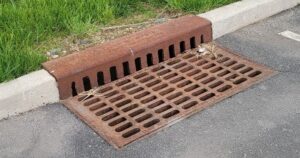
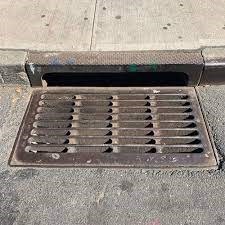
Third, we can work to reduce the amount of urban stormwater runoff. The less water there is flowing to local waterbodies, the less trash and pollutants will reach them as well. A sustainable strategy to treat urban stormwater runoff that designers, builders, and developers can take is by implementing a form of green infrastructure called “Green Roofs.” Green Roofs, also know as Roof Garden Drainage Systems, are almost exactly what they sound – they’re vegetation on a building’s roof top! They absorb most rainwater in a soil medium for plants to take, grow, and transpire water vapor into the atmosphere. Excess rainwater is directed to roof drains, which eventually reach the MS4 or CSO. In New York City, there is 40,000 acres of rooftop space over the approximately 190,000-acre city – over 20% of the city is rooftops! Currently, only 60 acres of the 40,000 (0.15%) are Green Roofs (nature.org).
Roof Garden
Finally, and arguably most importantly, we need to hold ourselves accountable. When walking through a city with some trash in hand, if the nearest trash bin is overflowing with garbage, consider waiting and using the next available empty bin. Use mass transit to reduce the number of vehicles depositing oil, grease, and BTEX chemicals into the environment. At home and in the suburbs, consider reducing the amount of yard fertilizer applied annually, compost or mulch your lawn trimmings and fallen leaves rather than leaving them on the curb for pick up, and clean up after your pets to reduce bacterial contamination. If it is rainy and windy the night before your local trash pickup, consider putting out the cans the next morning. Together, we can each take small steps to create a compounding effect that solves stormwater runoff contamination, resulting in cleaner waterbodies in our communities.
Please reach out to our experienced stormwater team for more information about solutions to stormwater management problems at [email protected].


